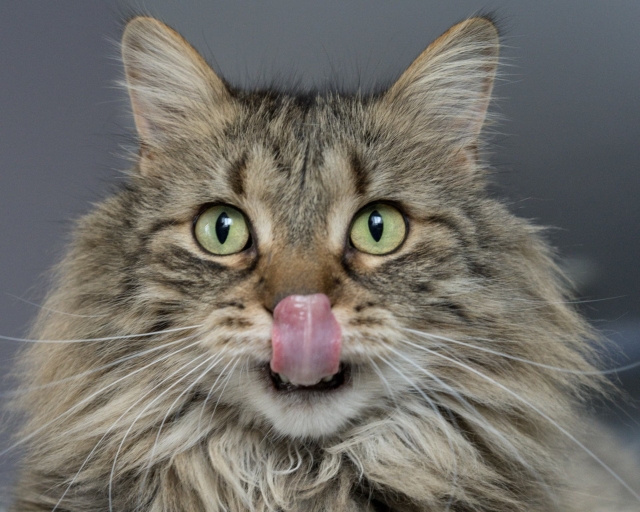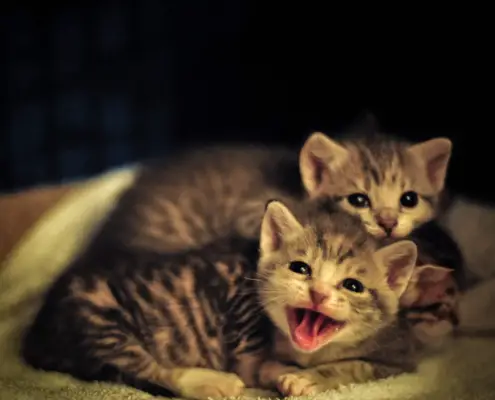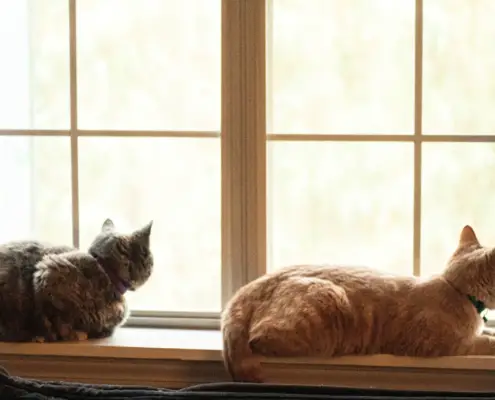
A balanced diet is essential for the overall health and well-being of cats. Just like humans, cats require a variety of nutrients to support their growth, maintain a healthy weight, and prevent diseases. While cats are obligate carnivores, meaning that they primarily rely on meat for their nutritional needs, incorporating nutrient-rich vegetables into their diet can provide them with additional health benefits. By understanding the importance of a balanced diet and the role vegetables can play, cat owners can enhance their feline companion’s health.
Can cats eat vegetables?
Many cat owners wonder whether it is safe to feed vegetables to their feline friends. The general answer is yes, cats can eat vegetables, but it is important to keep in mind that their digestive system is designed to process animal protein efficiently and there are some vegetables that are toxic to cats. While vegetables can provide some nutritional benefits, they should not replace the main source of protein in a cat’s diet. It is crucial to ensure that the vegetables are properly prepared and introduced gradually to avoid any digestive issues.
Nutrient-rich vegetables for cats
Certain vegetables can be a valuable addition to a cat’s diet, offering a range of essential nutrients. Leafy greens such as spinach are packed with vitamins A, C, and K, as well as minerals like iron and calcium. These nutrients contribute to a healthy immune system, strong bones, and a shiny coat. Another beneficial vegetable for cats is pumpkin, which is high in fiber and can help regulate digestion. Additionally, carrots provide a good source of beta-carotene, which is converted into vitamin A in the body and supports eye health.
Benefits of feeding vegetables to cats
Incorporating nutrient-rich vegetables into a cat’s diet can have several benefits. Firstly, vegetables can help prevent obesity in cats by providing a low-calorie alternative to traditional treats. This is particularly important for indoor cats that may be prone to weight gain. Secondly, vegetables can aid in digestion and prevent constipation due to their high fiber content. Lastly, the vitamins and minerals found in vegetables contribute to a strong immune system, promoting overall health and reducing the risk of diseases.
How to introduce vegetables to your cat’s diet
Introducing vegetables to a cat’s diet should be done gradually to allow their digestive system to adjust. Start by offering small amounts of cooked and mashed vegetables mixed with their regular food. Over time, gradually increase the proportion of vegetables while monitoring your cat’s reaction and digestion. It is important to note that not all cats will readily accept vegetables, so patience and persistence are key. Offering a variety of vegetables and finding the ones that your cat enjoys can make the transition easier.
Preparing vegetables for cats
When preparing vegetables for cats, it is essential to ensure that they are cooked and mashed to aid in digestion. Raw vegetables can be difficult for cats to digest and may cause gastrointestinal upset. Remove any seeds, pits, or skins that could be a choking hazard or contain harmful substances. It is also important to avoid adding any seasonings, spices, or oils, as these can be harmful to cats. Simple steaming or boiling vegetables until they are soft and then mashing or pureeing them is the best way to prepare vegetables for cats.
Common vegetables to avoid feeding to cats
While many vegetables are safe for cats, there are some that should be avoided due to their potential toxicity. Onions, garlic, and chives, for example, can cause damage to a cat’s red blood cells and lead to anemia. Similarly, avocados contain a substance called persin, which can be toxic to cats. Other vegetables to avoid include tomatoes and some mushrooms, as they may cause digestive issues or contain harmful compounds. It is always best to consult with a veterinarian before introducing any new vegetables to your cat’s diet.
Other ways to boost your cat’s health
In addition to incorporating nutrient-rich vegetables into your cat’s diet, there are other ways to boost their overall health. Providing fresh water at all times is crucial to keep cats hydrated and support their kidney function. Regular exercise and playtime are also important to maintain a healthy weight and prevent obesity-related issues. Additionally, grooming your cat regularly helps keep their coat clean and reduces the risk of hairballs. Lastly, ensuring that your cat has regular veterinary check-ups and vaccinations is essential for their long-term health.
Consulting with a veterinarian about your cat’s diet
Before making any significant changes to your cat’s diet, it is always recommended to consult with a veterinarian. They can provide personalized advice based on your cat’s specific needs, health conditions, and any dietary restrictions. A veterinarian can also help determine the appropriate portion sizes and frequency of vegetable consumption for your cat. Regular check-ups with a veterinarian will ensure that your cat’s nutritional needs are met and any potential health issues are addressed promptly.
Conclusion
Incorporating nutrient-rich vegetables into your cat’s diet can be a beneficial way to enhance their overall health and well-being. While cats are primarily carnivorous, adding vegetables in moderation can provide them with additional nutrients and health benefits. Leafy greens, pumpkin, and carrots are just a few examples of vegetables that can be safely introduced to a cat’s diet. However, it is important to introduce vegetables gradually, prepare them properly, and avoid toxic vegetables. By consulting with a veterinarian and ensuring a balanced diet, cat owners can help their feline companions live a healthy and happy life.
If you’re considering adding vegetables to your cat’s diet or have any concerns about their nutrition, consult with a veterinarian for personalized advice and guidance. Your cat’s health is worth the extra care and attention.
If you enjoyed my article, I would appreciate you sharing it with your network.

Sima Ndlebe
Sima writes for CatBuzz. He is interested in Cats, Health and Fitness, and Entrepreneurship.
Published: 13 October 2023
Related Articles
Disclaimer
The content found on CatBuzz.org is presented on an "as is" basis and is intended for general consumer information and education purposes only. Any utilization of this information is voluntary and solely at the user's own risk.
None of the articles or content should be regarded as, or used in place of, veterinary medical advice, diagnosis, or treatment. The information provided on the website is purely for educational and informational intentions and should not be considered a substitute for professional guidance from a veterinarian or other qualified expert. The articles are designed to inform consumers about veterinary healthcare and medical matters that may impact their cat's daily life. It should be noted that this website and its services do not constitute the practice of any form of veterinary medical advice, diagnosis, or treatment. CatBuzz.org explicitly disclaims any liability for any direct or indirect damages or losses that may arise from the use of or reliance on the information contained within the content.
Consumers must consult a veterinarian, veterinary specialist, or another qualified veterinary healthcare provider when seeking advice regarding their cat's health or medical conditions. It is important not to ignore, avoid, or postpone seeking medical advice from a veterinarian or other qualified veterinary healthcare provider solely based on information obtained from this website. If you believe that your cat may be experiencing a medical issue or condition, it is imperative to promptly contact a qualified veterinary healthcare professional.




